What to do in the garden in November
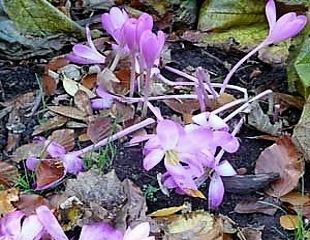


The winter months are quiet in the garden. I find after being shut indoors in bad winter weather, it is lovely to get outside into the garden on milder days. There are lots of studies which demonstrate the link between good mental health and gardening. I always feel better after time in the garden; I confess I find weeding therapeutic.
And there is still good autumn colour in the garden: check out Shrubs and Plants Flowering in November
Lawn Care and free mulch
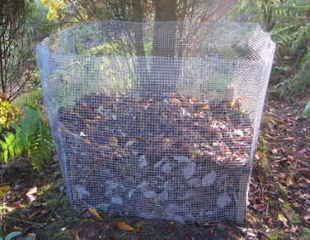
Leaves left on the borders are not a problem; leaves left on the lawn are. They cut out the light, which will cause the grass underneath to go brown and die.
November is an ideal time to rake up the leaves and get some free garden mulch for the next year. Alternatively, raise the blades on the mower and mow the lawn. It will pick up and chop the leaves ready for the bin.
It is easy to make a pen (image left) by putting 4 corner stakes into the ground. Wrap chicken wire around the stakes and pile the leaves in. They will rot down over the gardening year, ready to spread on borders as mulch following winter/spring. You can tell when the leaf mould is ready to use as it becomes well-rotted and crumbly.
If you have no space for a leaf mould bin, you can store leaves in a bin bag. It is essential to put holes in to allow air and drainage, otherwise it can become a slimy mess. It is best to avoid composting tough leaves such as Magnolia, Horse Chestnut, Sycamore, although you can shred them first to speed up decomposition.
Don't get a green pond

Act now, in November, to prevent a green pond in spring. Just as it does not benefit a lawn to have winter leaves on it, leaves are not good for ponds either.
This is because when the leaves rot down, they add slurry and nitrates to the water. Nitrates enrich the pond water and upset the natural balance, making algae more likely, increasing the chances of a green pond in the spring. If leaves are a problem for your pond, skim them off. Similarly, cut off any decaying vegetation, which may die back at this time of year.
It is the process of decomposition from either leaves or plants, which raises the nitrate level and reduces the oxygen, which is also not ideal if you have fish in the pond.
Be Greener this Christmas
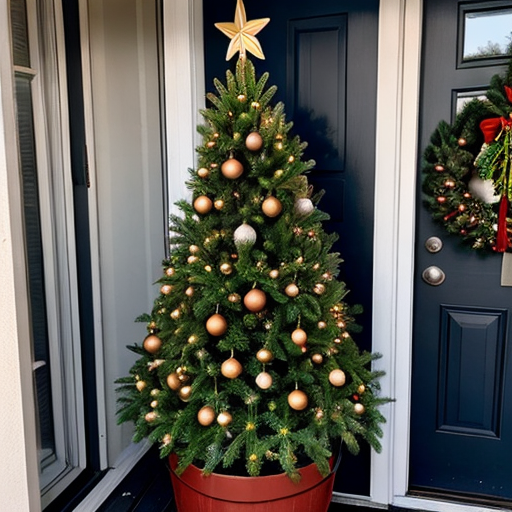
Why not be greener this Christmas and grow a permanent Christmas tree outside in a container? Not only will it look stylish, but it will also save a lot of trees. Because of the cost-of-living crisis, the cost of a real Christmas tree has rocketed.
It is surprisingly easy to spend £50.00+on a Christmas just for one year. Buy and plant a tree in a container or your garden. It's there every year.
Check out this blog post with information on which trees you should pick as container Christmas trees. (Hint, not the usual Nordic tree as they grow way too fast and big.
Winter berries bring birds into the garden
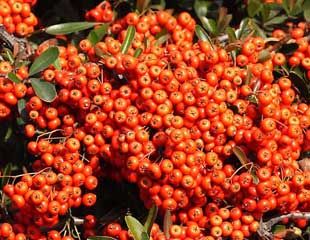
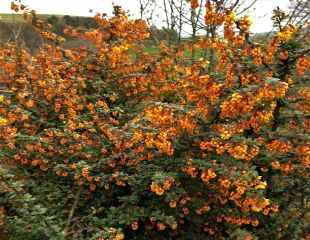
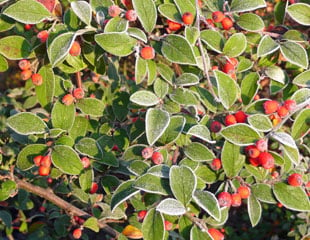
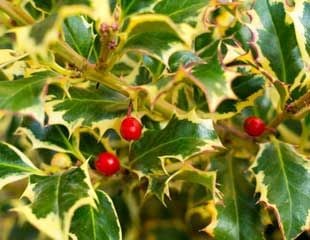
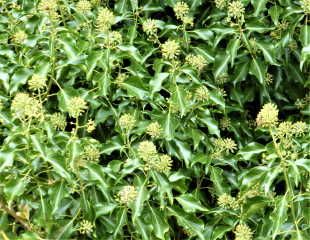
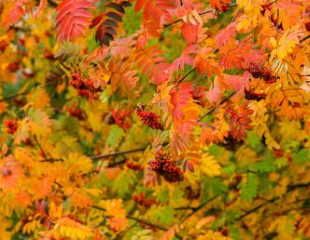
These are all easy-to-grow garden shrubs and trees, which produce berries in late autumn and early winter. A big attraction for birds and wildlife. Our various garden birds eat a variety of different berries and seeds, and so by growing a few different berry-producing shrubs, you are providing food for a wide range of birds.
Also, whilst lots of gardeners plant in the spring, autumn is the ideal time to plant shrubs. The most common cause of shrubs failing to thrive is a lack of water. By planting in the autumn, the shrubs and trees benefit from the higher levels of rainfall.
The Debate: Whether to Cut Back Perennials?
The summer flowers are winding down, and if you are a tidy sort of gardener, you will want to cut them down and make the borders neat. Nothing wrong with that. Equally, you can leave the borders as they are, and it will give protection from frosts and provide cover for wildlife. There is a trend to leave the border to decay slowly over the winter to provide habitat, and also some plants look architecturally good as the frost appears, such as Sedum, seed heads on Agapanthus, and grasses. Equally, some herbaceous perennials can look very tatty by now, such as Hosta, delphinium.
I compromise. I cut down some plants if they have collapsed and just look mushy. The stronger, more aesthetic plants I leave in situ until the spring.
Take care cutting back perennials as even as early as November, some perennials will have new shoots emerging at the plant base. It is important when cutting back not to damage the new growth. If your compost/green bin is full you can leave cuttings from perennials on the borders. Chop up leaves and stems into small pieces and leave them on the ground to break down over winter.
One advantage of clearing the borders is to see the weeds lurking below and to clear them out before the winter. I am usually shocked to find just how many weeds have found a home in the border once I start to clear away the dead and brown foliage of the summer plants. Autumn is a good time to weed, as it always seems to me the weeds give way more easily after a few frosts.
Tree Washing
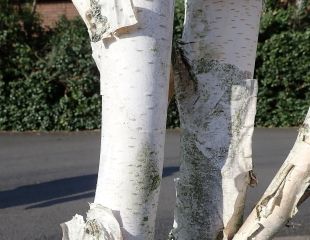
Trees are grown for their attractive bark, such as illustrated which is Himalayan Birch (Betula utilis) can become dirty or prone to green moss, spoiling the appearance of the bark.
You can clean the bark using warm water and a soft cloth to remove any accumulated grime and bring back the bright whiteness of the bark. Just like you would in the house, dust off the bark first and then wipe down with a wet cloth, no soap.
November is time to Plant Tulips
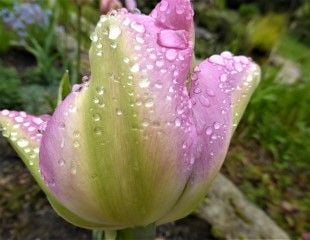
November is the best time for planting Tulips. Daffodils need to go in first in September and October; Tulips later in November. The correct planting depth is very important to ensure the bulb flowers.
The most common reasons why bulbs fail to flower are planting too shallow. This usually means no flowers the second year. A good rule of thumb is to plant the bulb 3 times its own depth, and if unsure, plant deeper, not shallow.
Also, not all tulips are designed to return each year. If you want tulips to flower again, it is important to select the right variety - more information about perennial tulips.
More detailed information about growing spring bulbs.
Check out Pinterest for inspiring spring bulb planting ideas
It is not necessary when planting new spring bulbs in containers to use fresh compost. You can reuse compost from any end-of-season containers which are finished. A bulb is a complete power pack and has everything within the bulb to flower next year and needs no additional nutrients. Read more about using old compost and saving money.
This short 3 minute video looks at planting new spring bulbs in old compost, thus saving money. Also checks out planting depths.
A 4-minute video explains what to do about last year's spring bulbs still in containers to ensure they flower next year.
Don't forget the tender plants
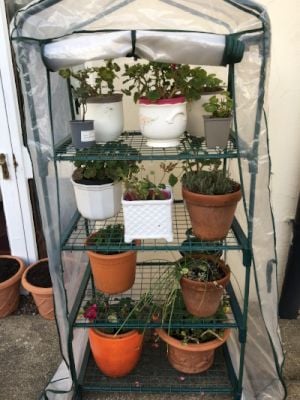
Overwintering plants can be a good way to save money and to have a more established plant for next spring. Some plants are not hardy enough to survive the winter outside and need frost protection.
For more information about what "hardy " means, check out the guide to frost hardy.
To protect plants, overwinter in a greenhouse, lean-to, conservatory or unheated porch for the winter.
How much protection your plants need depends on the aspect of your garden, and the severity of the winter. In the image, Pelargoniums which are H1C hardy (5-10) survived fine in this lean to in a sheltered spot.
What is more important is airflow and ventilation.
If you are overwintering plants such as Pelargonium and fuchsias in the greenhouse, open the doors and vents on mild days to reduce the incidence of (Grey mould) Botrytis, which often arises in airless, damp conditions. A good tip is to raise the plants up on a simple trestle made from bricks to increase the airflow around the plants. Most important with the cold, damp air is to water plants sparingly; less is more over the winter. Video tips on overwintering plants.
Winter Prune Roses
From now until early winter is a good time to prune roses, especially climbing roses. This is a general prune, reducing the overall size of the shrub by about a third to prevent wind rock. When the wind catches the rose's longer stems, the plant rocks or moves, which loosens its footing and roots. Over time, the entry point of the trunk into the soil widens and allows water and ice in, thus damaging the plant and its roots.
November in the veg plot
Plant Autumn Garlic
November is an ideal time to plant Autumn Garlic. It is a very easy crop to grow. Autumn-planted garlic benefits from the cold months, improves the bulb formation and also provides a longer growing season. Like all bulbs, Garlic does not appreciate a lot of winter wet. Tips and hints about growing Autumn Garlic
Types of garlic suitable for autumn planting are ‘Lautrec Wight’: but note it is not suitable for heavy soils or very cold plots, and'Early Wight. Garlic Bella Italiano, a hard neck variety, is suitable for Autumn planting and Garlic Provence Wight.
If you cannot find what you want, or it's too expensive, buy a decent-sized (organic) bulb from your local supermarket or greengrocer, preferably one you have cooked with and like. Plant it and it will do surprisingly well.
If it is too wet better to leave planting until the spring.
Plant Autumn Broad Beans
Broad beans are fairly hardy and there are specific varieties of broad bean sold for autumn planting, such as 'Aquadulce Claudia' 'The Sutton' and 'Super Aquadulce'. The advantage of an autumn sowing is that the plants will crop earlier in the following year and you may find slightly less blackfly.
Clear the Veg plot
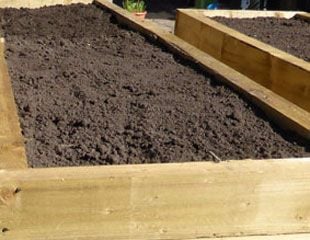
If you are not growing over winter, November is a good time to clear the veg plot weeding, removing stones and debris from the year. After clearing, spread the plot with well-rotted manure or organic matter for the winter.
In early spring, you can cover the plot with a mulch to prevent any weed growth after the hard work of clearing it. Historically, we have covered plots with plastic, and if you are reusing existing plastic, that is still a good idea. If you are covering the plot with cardboard, you may want to think of the origin of the material. Cardboard often includes glue, ink, labels and some chemicals, and since it is going on the veg plot, is it safe? It's a personal choice but one thing you can do is make it safer. This article on the Growing Veg website has some helpful hints to make cardboard veg plot safe.
Late ripening of Tomatoes
Tomatoes have fairly well stopped now, and it's time to cut your losses and bring them inside to ripen. There are lots of ways suggested as to how to ripen green tomatoes. One fool-proof way I have used for years to ripen tomatoes is to cut them on the vine, bring them in and place on a warm windowsill, sunny porch or conservatory in a dish or on cardboard and leave them to ripen; they will.
I have used this method for years to ripen tomatoes, and it does work; say goodbye to green tomato chutney for ever - more information on ripening tomatoes.
